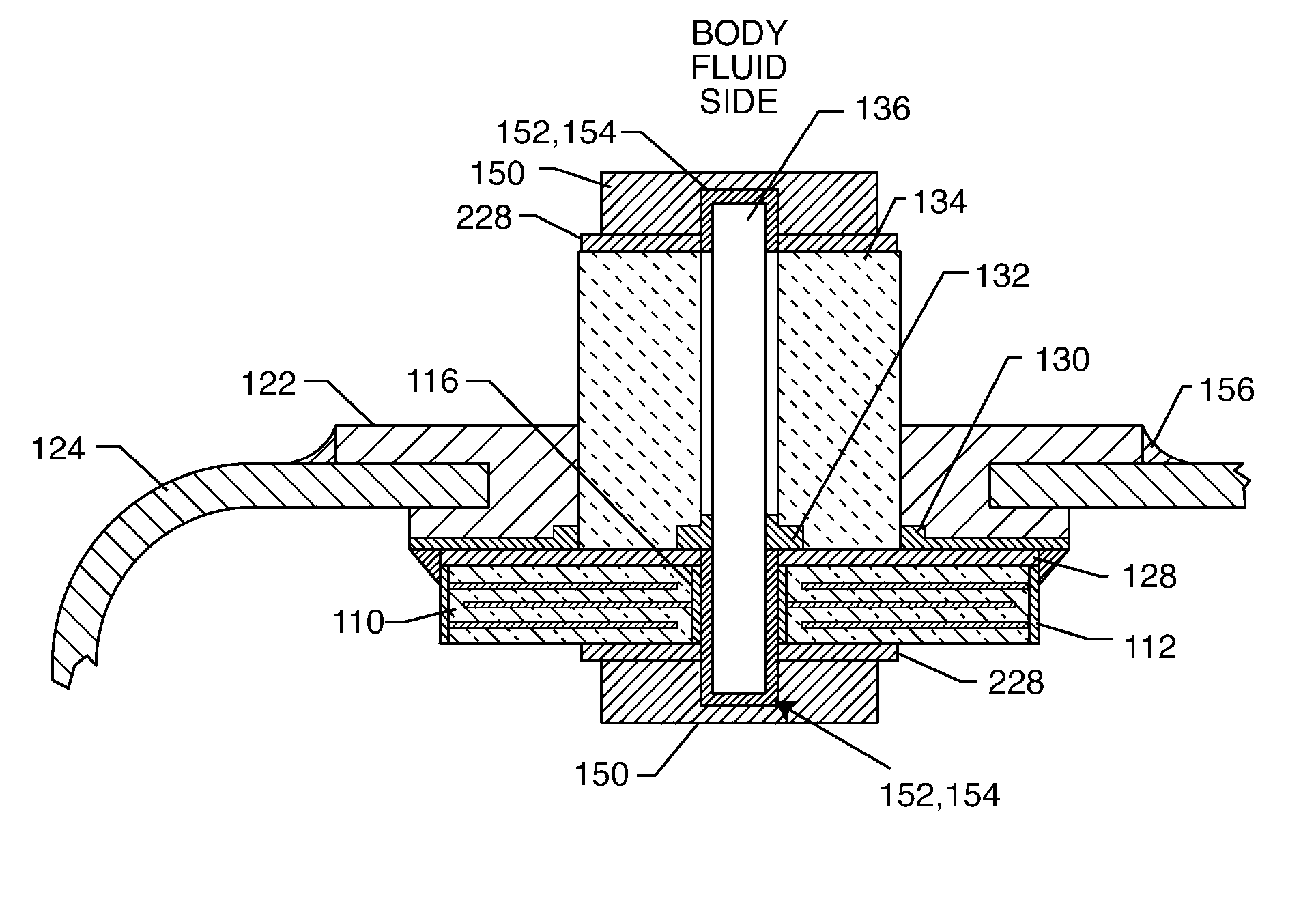Hermetic feedthrough terminal assembly with wire bond pads for human implant applications
a technology of wire bonding pads and feedthrough terminals, which is applied in the direction of feeding capacitors, fixed capacitor details, therapy, etc., can solve the problems that solders and conductive adhesives cannot be applied directly to such pin materials, and the proper operation of pacemakers is seriously disrupted, and the effect of weak tension
- Summary
- Abstract
- Description
- Claims
- Application Information
AI Technical Summary
Benefits of technology
Problems solved by technology
Method used
Image
Examples
Embodiment Construction
[0062]Reference will now be made in detail to presently preferred embodiments of the invention, examples of which are represented in the accompanying drawings for purposes of illustration. Such examples are provided by way of an explanation of the invention, not a limitation thereof. In fact, it will be apparent to those skilled in the art that various modifications and variations can be made in the present invention, without departing from the spirit and scope thereof. For instance, figures illustrated or described as part of one embodiment can be used on another embodiment to yield a still further embodiment. Still further, variations and selection of materials and / or characteristics may be practiced, to satisfy particular desired user criteria. Thus, it is intended that the present invention cover such modifications and variations as come within the scope of the present features and their equivalents. In the following description, functionally equivalent components of the various...
PUM
 Login to View More
Login to View More Abstract
Description
Claims
Application Information
 Login to View More
Login to View More - R&D
- Intellectual Property
- Life Sciences
- Materials
- Tech Scout
- Unparalleled Data Quality
- Higher Quality Content
- 60% Fewer Hallucinations
Browse by: Latest US Patents, China's latest patents, Technical Efficacy Thesaurus, Application Domain, Technology Topic, Popular Technical Reports.
© 2025 PatSnap. All rights reserved.Legal|Privacy policy|Modern Slavery Act Transparency Statement|Sitemap|About US| Contact US: help@patsnap.com



